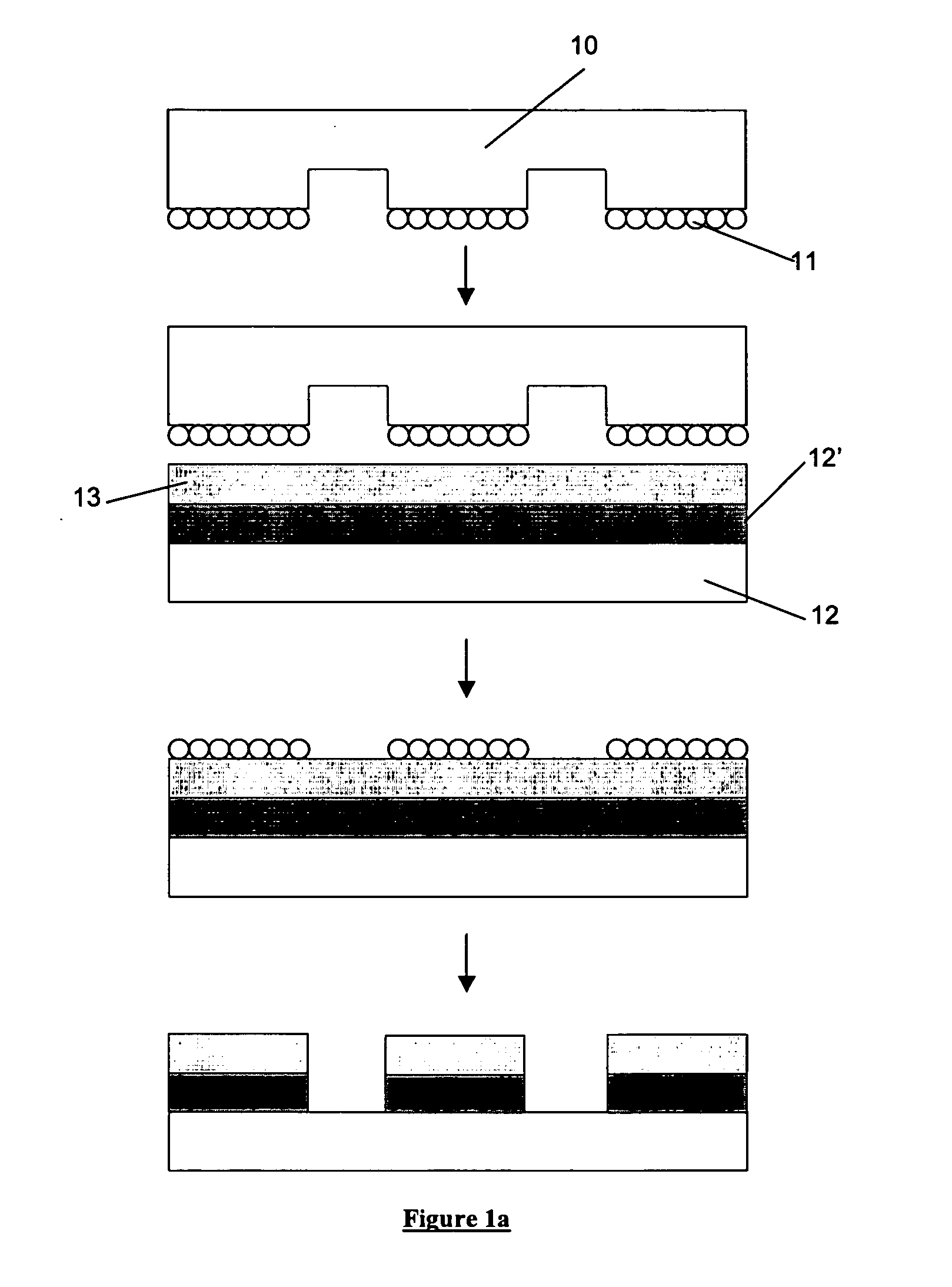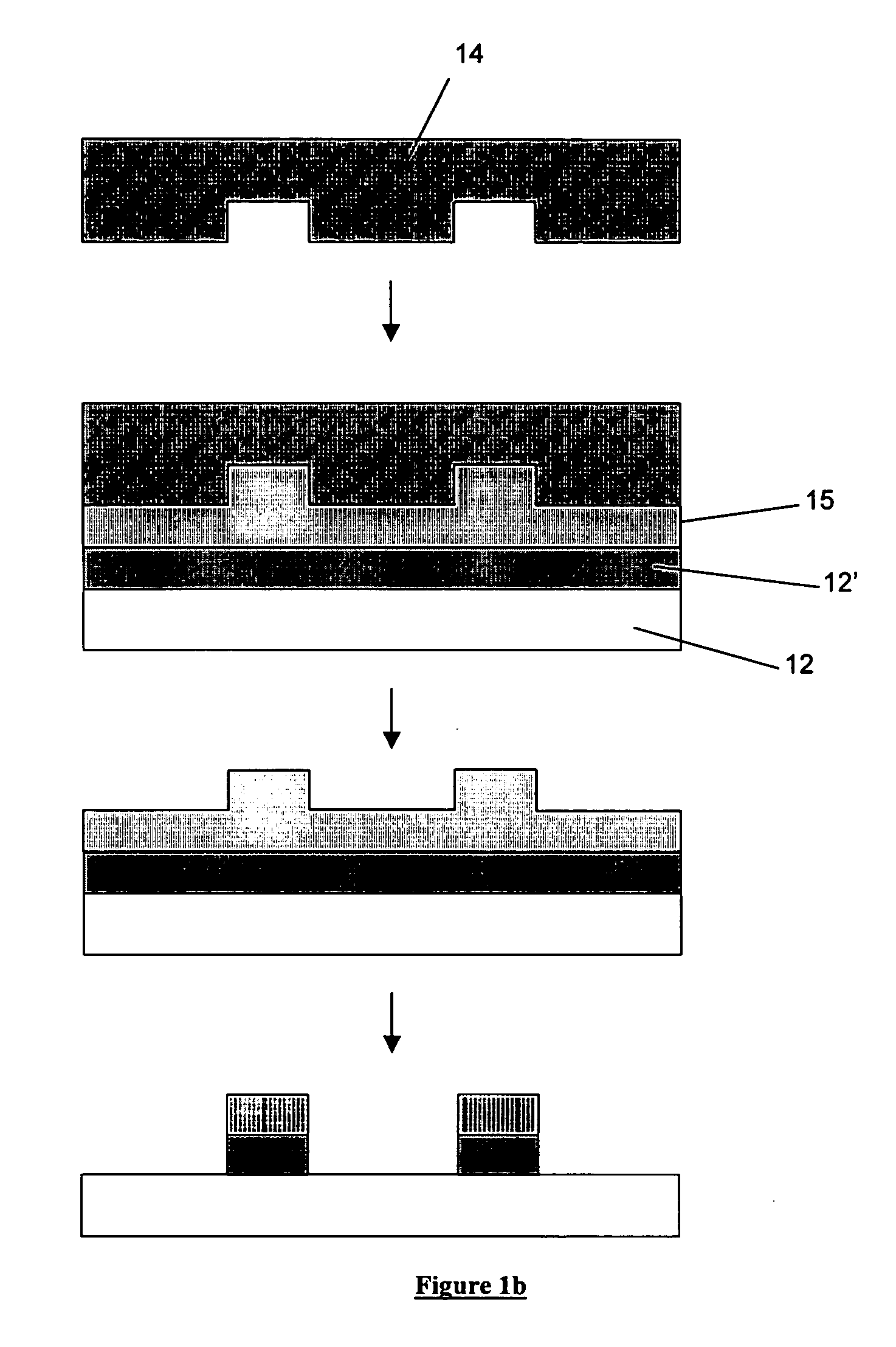Imprint lithography
a technology of imprint lithography and lithography plate, which is applied in the field of imprint lithography, can solve the problems of difficult to achieve the effect of enhancing the resolution of the optical lithography machine, requiring complex optics and rare materials, and high cos
- Summary
- Abstract
- Description
- Claims
- Application Information
AI Technical Summary
Problems solved by technology
Method used
Image
Examples
Embodiment Construction
[0018]There are two principal approaches to imprint lithography which will be termed generally as hot imprint lithography and UV imprint lithography. There is also a third type of imprint lithography which may be referred to as “printing” lithography. Examples of these are illustrated in FIGS. 1a to 1c.
[0019]FIG. 1a shows a printing lithography process, known as micro-contact printing, which involves transferring a layer of molecules 11 (typically an ink such as a thiol) from a flexible template 10 (typically fabricated from polydimethylsiloxane (PDMS) onto a resist layer 13 which is supported upon a substrate 12 and planarisation and transfer layer 12′. The template 10 has a pattern of features on its surface, the molecular layer being disposed upon the features. When the template is pressed against the resist layer the layer of molecules 11 stick to the resist. Upon removal of the template from the resist the layer of molecules 11 stick to the resist, the residual layer of resist...
PUM
| Property | Measurement | Unit |
|---|---|---|
| wavelengths | aaaaa | aaaaa |
| aspect ratio | aaaaa | aaaaa |
| thickness | aaaaa | aaaaa |
Abstract
Description
Claims
Application Information
 Login to View More
Login to View More - R&D
- Intellectual Property
- Life Sciences
- Materials
- Tech Scout
- Unparalleled Data Quality
- Higher Quality Content
- 60% Fewer Hallucinations
Browse by: Latest US Patents, China's latest patents, Technical Efficacy Thesaurus, Application Domain, Technology Topic, Popular Technical Reports.
© 2025 PatSnap. All rights reserved.Legal|Privacy policy|Modern Slavery Act Transparency Statement|Sitemap|About US| Contact US: help@patsnap.com



